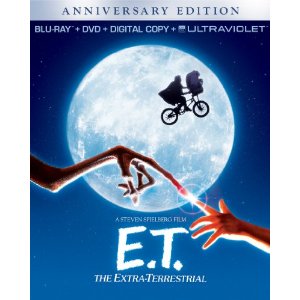The Maltese Falcon
Posted on December 13, 2002 at 5:17 am
Plot: Sam Spade (Humphrey Bogart) is a private detective. A woman who says her name is Ruth Wonderly (Mary Astor) comes to see him, asking for help in finding her sister. Sam sends his partner, Miles Archer (Jerome Cowan) to follow her when she meets Floyd Thursby, the man she thinks her sister is with, and both Archer and Thursby are killed. It turns out that the woman has given him a false name. She is really Brigid O’Shaughnessy, and it turns out it is not her sister she is seeking, but a small, jeweled statue of a falcon, and she is mixed up with some people who will do anything to get it.
One of those people is Joel Cairo (Peter Lorre), who comes to see Sam to insist — with a gun — that he be allowed to search Sam’s office to see if it is there. Sam is not at all intimidated by Joel, but allows him to search. Also after the statue is Mr. Gutman, “the fat man” (Sidney Greenstreet), with his “gunsel,” Wilmer. They alternately threaten and attempt to bribe Sam, while Brigid appeals to his protective nature and his heart. But Sam turns them all over to the police, including Brigid, whom he loves.
Discussion: One of the most interesting aspects of this classic movie is the way that Sam Spade thinks though the moral dilemmas. When he is deciding whether to tell the police about Brigid, he is very explicit about weighing every aspect of his choices. It is not an easy decision for him; he has no moral absolutes. On one hand, he loves her, and he did not think much of his partner. On the other, he does not trust her, he does not think she trusts him, and he knows that they could not go on together, each waiting to betray or be betrayed. And he has some pride; he says that when your partner is killed, you are supposed to “do something.” While it may be good for business not to appear too ethical, it is bad for business to allow a partner in a detective firm to get killed without responding. If he turns her over to the police, he loses her. But if he does not, he loses a part of himself, his own kind of integrity.
When this movie was made, moviegoers were used to cool, debonair detectives (like Philo Vance and Nick Charles, both played by William Powell), a sort of cross between Sherlock Holmes and Fred Astaire. But Sam Spade, created by Dashiell Hammett based on his experiences as a detective, was a modern day version of the cowboy, a loner with his own sense of honor.
This was the first movie directed by John Huston, who also wrote the screenplay, but he was already a master. Watch the two scenes where Sam goes to talk to Gutman, and see how the camera angles in the first scene lead the viewer to suspect that Sam’s drink is spiked (it isn’t), and then how different angles are used in the second one to make the viewer confident that it won’t be (it is).
Questions for Kids:
· What does Sam mean when he says the statue is “the stuff dreams are made of”?
· Where is Sam faced with moral conflicts? How does he resolve them? What are his reasons?
Connections: Bogart appeared as a similarly tough detective, Philip Marlowe, in “The Big Sleep,” based on the novel by Raymond Chandler. The books by Hammett and Raymond Chandler are well worth reading. Note the director’s father, Walter Huston, in an uncredited brief appearance as Captain Jacobi. Jerome Cowan, who appears briefly as Miles Archer, plays the prosecuting attorney who tries to prove that Kris Kringle is not Santa Claus in “Miracle on 34th Street.”

